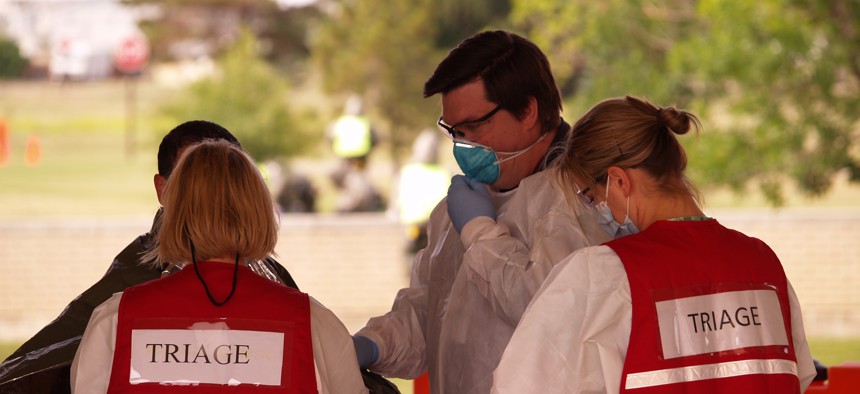Faster, scalable triage for mass casualty incidents

Photo courtesy of Malmstrom Air Force Base
DARPA is challenging innovators to develop advanced sensor and algorithm technology that can quickly assess the extent of an injury.
When mass casualty events strike, emergency responders must provide immediate care. But when the number of injured vastly outpaces available medical personnel, assessing who needs care first and providing efficient treatment can be a daunting task.
That’s why the Defense Advanced Research Projects Agency issued the Triage Challenge, which seeks innovations that can speed up medical triage—the practice of prioritizing care based on the severity of patients’ injury or illness. A Nov. 16 broad agency announcement calls for breakthroughs that can better identify the physiological features, or signatures, of injury so medical responders perform scalable, timely and accurate triage—especially for mass casualty incidents.
Those technologies might feature sensors on autonomous platforms, such as unmanned aircraft and ground vehicles, remote sensors to capture physiological data and algorithms that can process data to help medics identify the most urgent cases.
These sensor-algorithm systems may include computer vision, motion tracking, remote measurement for blood volume, lidar assessment of respiratory or cardiac activity and speech recognition, according to the BAA. With data from contact-based and remote sensors, injury information can be integrated with other data about the scene to enhance overall situational awareness and improve individual care as more information about a patient’s injury becomes available.
More than $7 million is at stake for competitors who participate in the three-year, three-phase challenge program. Proposals are due February 2023, and competitors will participate in physical and virtual stimulations of mass casualty events to evaluate the speed and accuracy of their technology.
“The foundations of the challenge are noninvasive sensors to interrogate physiology, algorithms to identify injury signatures in the sensor data, and communities, emergency responders, technology developers … to ensure we deliver operationally relevant technologies,” the challenge’s program manager Cmdr. Jean-Paul Chretien said a video announcing the program.






